Two common lenses for drone based photographic mapping are the Sony 16mm “pancake” lens and the 7Artisians 25mm lens. Both are very lightweight and compact E-Mount lenses.
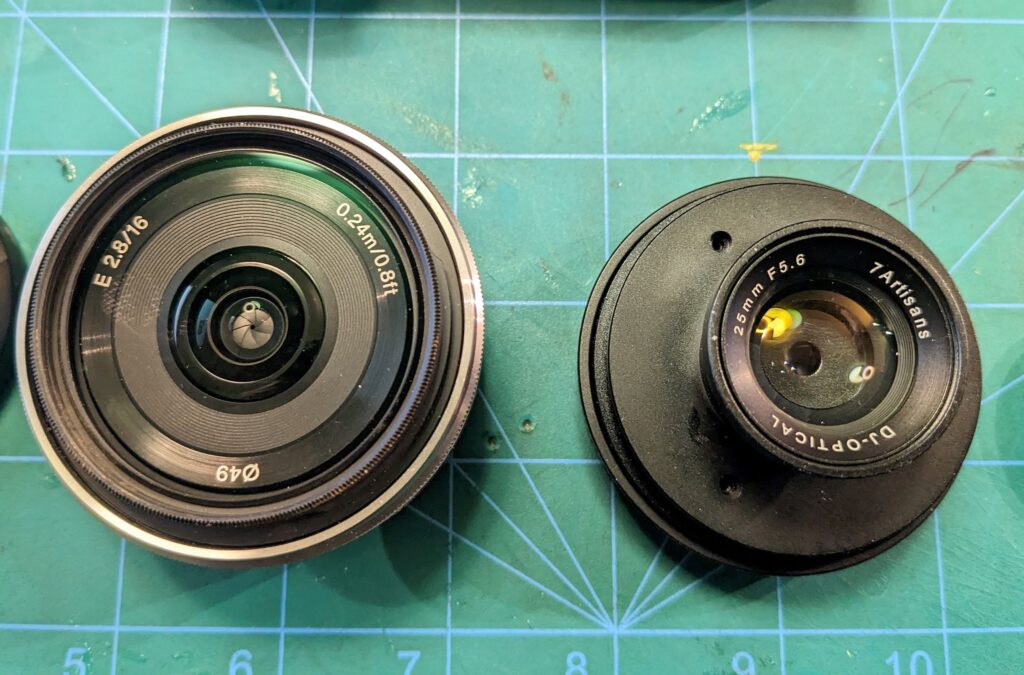
Besides the different focal lengths, the 7Artisians 25mm lens has fixed focus at infinity, and a fixed aperture of F5.6. By comparison, the Sony is an auto-focus lens and has an F2.8/16 aperture.
To compensate for the slower aperture, pictures taken with the 7Artisians lens are typically at a higher ISO than the same photo taken with the Sony lens at the same shutter speed. The higher ISO can contribute to noise on an image.
The Sony lens has measurable distortion and a soft focus at large apertures. So it’s images can have negative artifacts as well.
I decided to test these lenses at common distances and shutter speeds used in drone mapping missions. I photographed a road sign at 30, 60, 90 and 120 meters with both lenses. At each distance I also took four photographs with each lens at 1/800th, 1/1600th, 1/2000th and 1/2500th second shutter speeds. Then I zoomed in on the road sign to use it as a reference for clarity.
Typically lower altitude flights require faster shutter speeds. So I compared images from each lens at the shutter speed typical for that distance. This allows the camera to change the ISO necessary – and on the Sony lens, the F-Stop too. In bright sunlight – all images with the Sony lens were taken at F4.
Below are screenshot comparisons of images from the two lenses. I’ve uploaded the original images to Dropbox – they are available here: Original Image Files
30 Meter Image Comparison – 1/2500 second
- Left Side – Sony 16mm lens – F4, ISO-320
- Right Side – 7Artisians 25mm lens – F5.6 – ISO=640
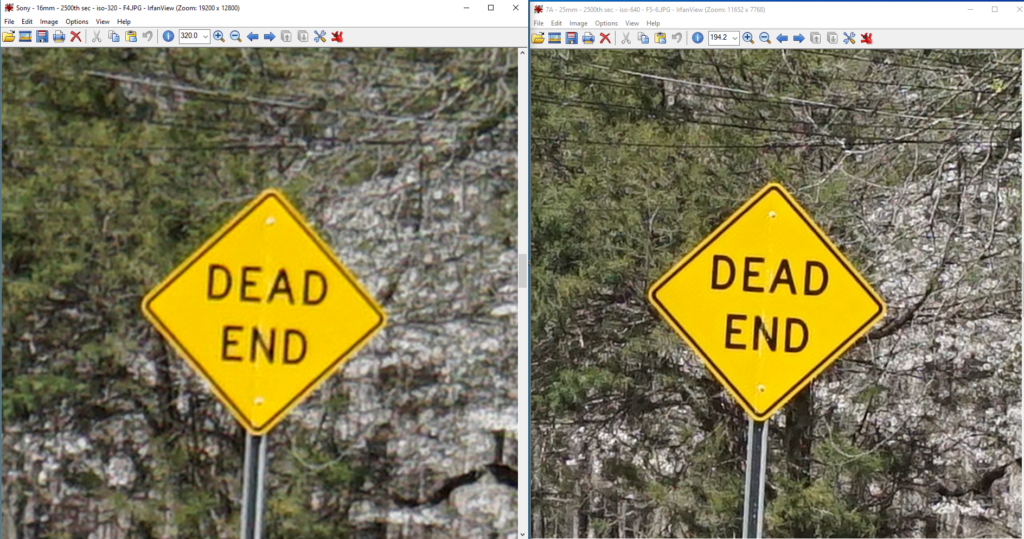
60 Meter Image Comparison – 1/2000 second
- Left Side – Sony 16mm lens – F4, ISO-250
- Right Side – 7Artisians lens – F5.6, ISO-500
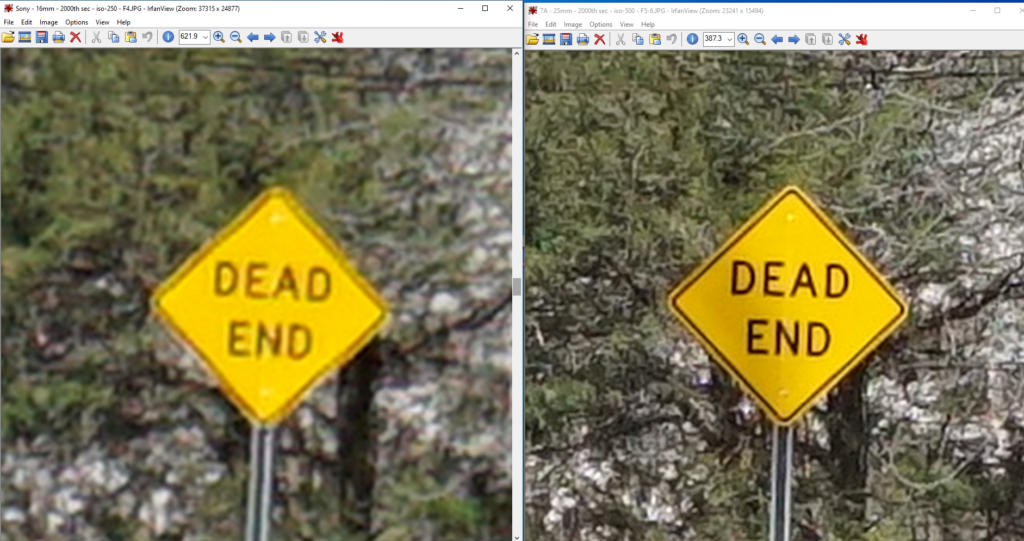
90 Meter Image Comparison – 1/1600 second
- Left Side – Sony 16mm lens – F4, ISO-250
- Right Side – 7Artisians 25mm lens – F5.6, ISO-500
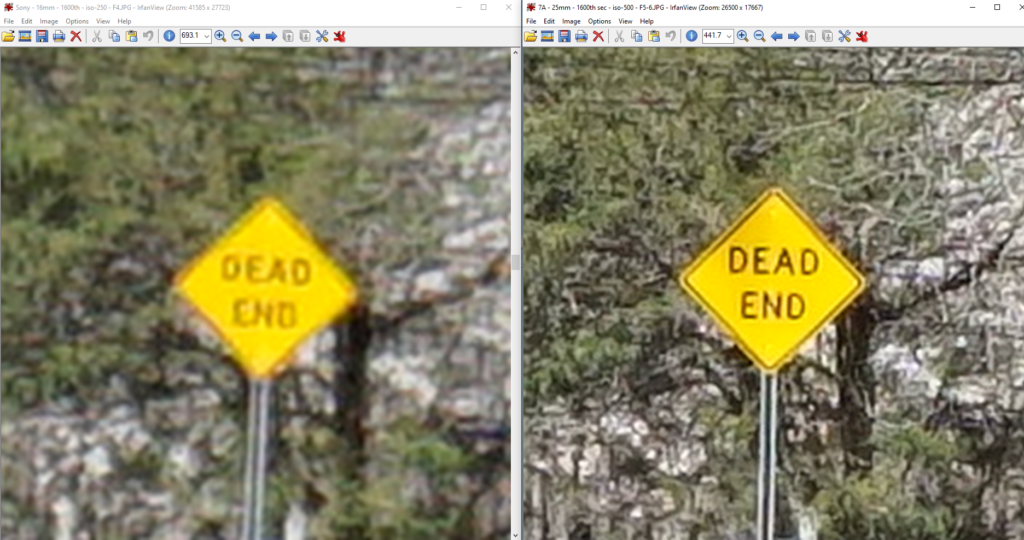
120 Meter Image Comparison – 1/800 second
- Left Side – Sony 16mm lens – F4, ISO-100
- Right Side – 7Artisians 25mm lens – F5.6, ISO-250
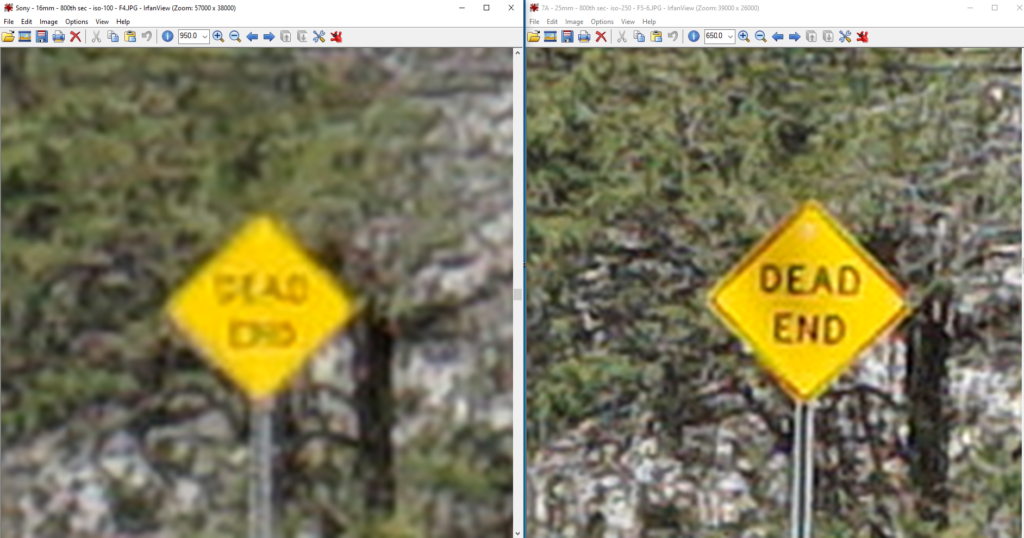
Interestingly, even though the Sony lens does not produce images as sharp as the 7Artisians lens, when used for photogrammetry, Pix4D is likely to generate equally good quality reports with both lenses. I think the take-away from that result is that there is more that can go into a Pix4D model than what is described on the quality report. For example, the sharpness of the 3-D model is better when the images are sharper.
While I suspect that the measurable attributes of an ortho-mosaic or point-cloud will be superior when constructed from sharper images, I’ve not yet test this idea. I’d be interested in any comments on this topic.
